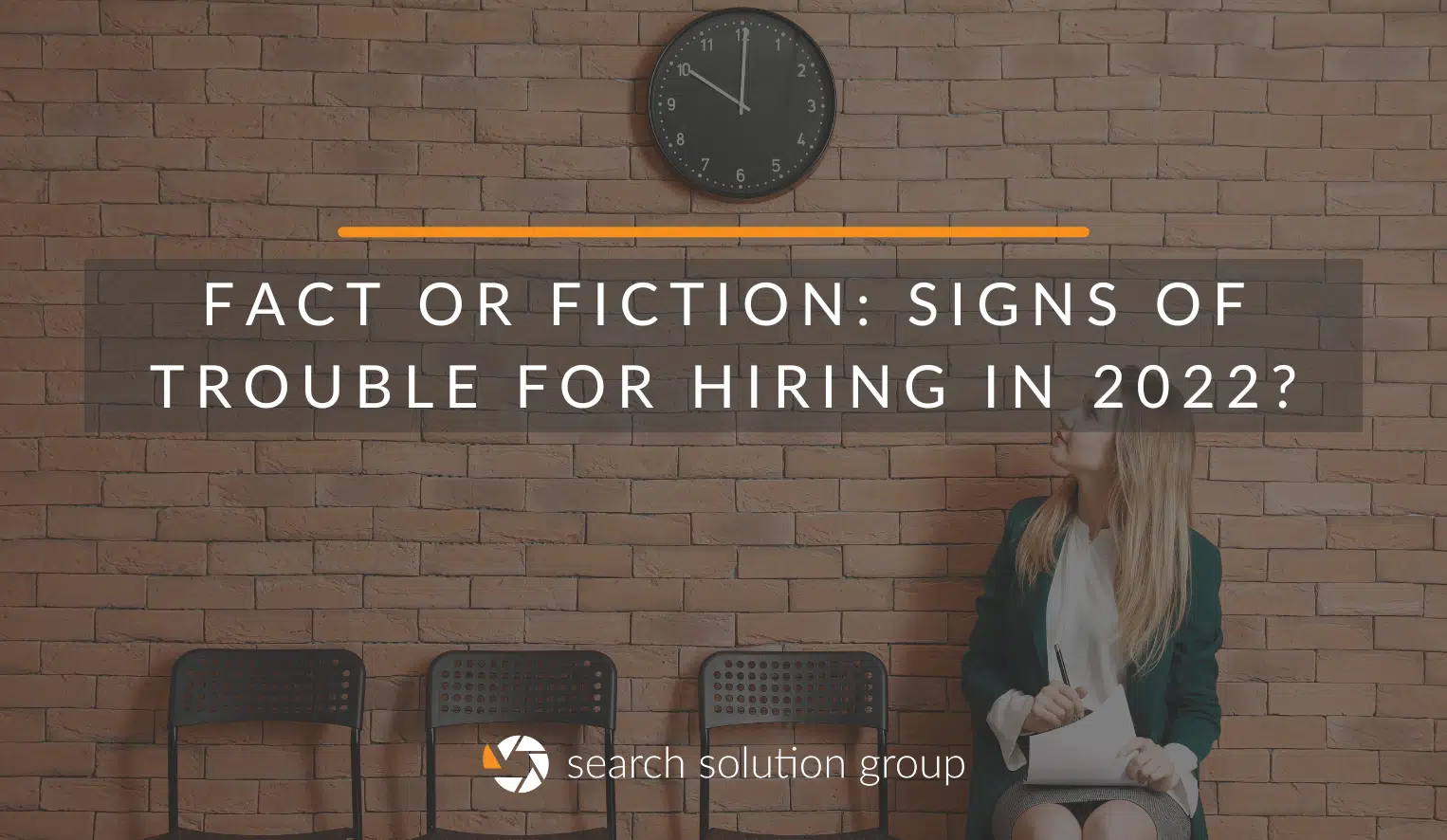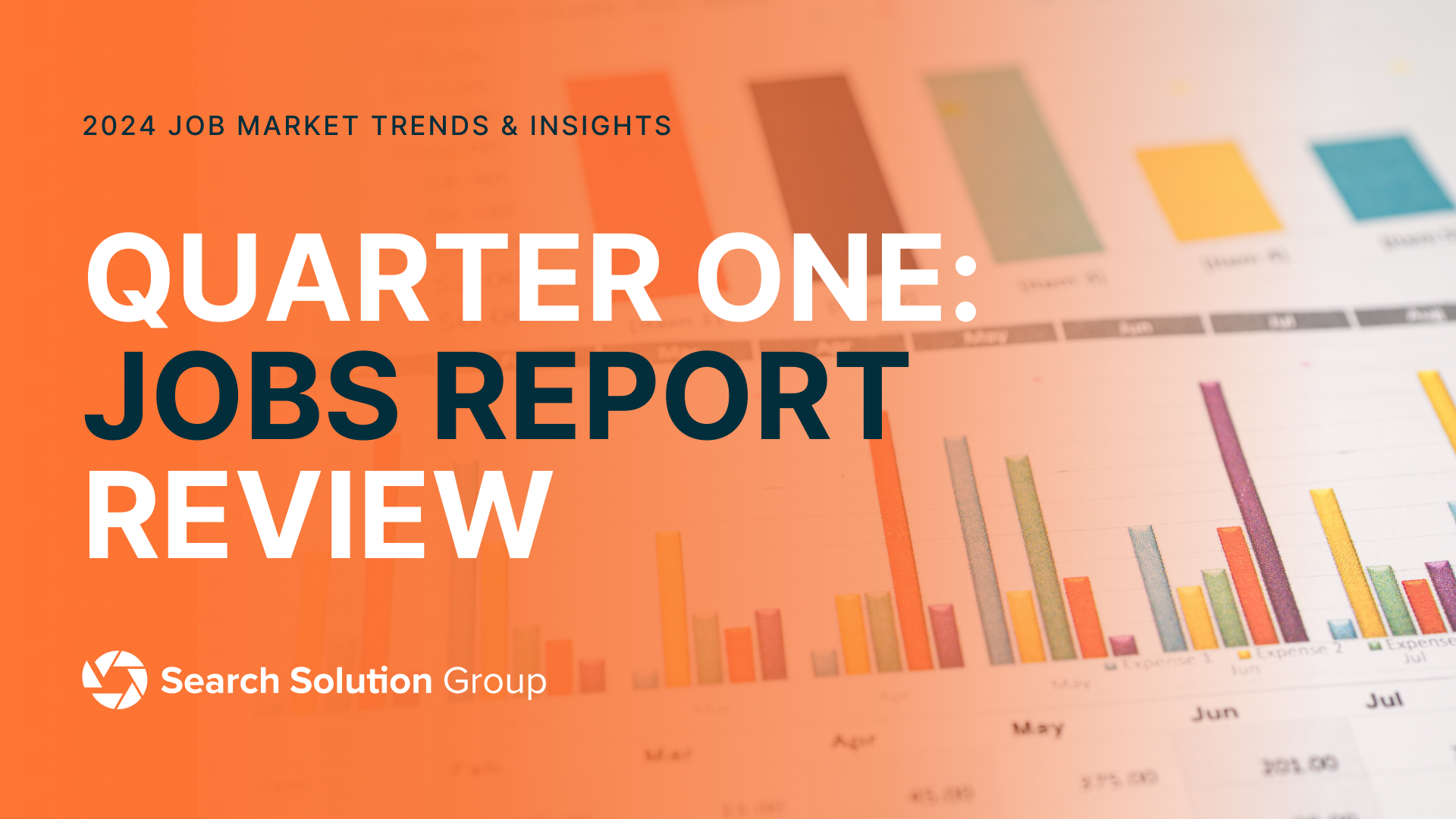A quick look at the headlines in Q3 of 2022 paints a grim picture of the labor market. Mega companies like Meta and Google are in the early stages of downsizing their workforce. Other headlines offer vague and cynical sentiments about layoffs and hiring freezes. It’s enough to spook recruiters and job seekers alike; however, the doom and gloom that accompany this news might not be as serious as they seem.
Insights from the Bureau of Labor Statistics’ (BLS) September Employment Situation Summary indicate that while hiring has plateaued in some sectors, it’s on the rise in others. Moreover, the labor market itself doesn’t appear to be cooling as the headlines might suggest. Instead, it’s more likely poised for incremental, sustainable growth in the coming years.
Let’s take a closer look at the numbers behind the current state of the labor market: a delineation of fact vs. fiction, and what the hiring market actually looks like from the perspective of job seekers and recruiters.
The current state of the job market
The BLS Employment Situation Summary — colloquially referred to as the “Jobs Report” — is the de facto source for both macro and sector-specific employment data. It’s where most news outlets tend to get the data that shapes labor market headlines. The problem? Data without context is subjective, and often, negative headlines drive more traffic.
The data presented in the September Employment Situation Summary is far from negative. In fact, many analysts would call it stable. Very few major sectors experienced contraction in August and several key sectors show increasingly positive outlooks moving forward.
- Industries that have remained relatively flat regarding job growth in 2022 include construction, hospitality, and technology. Yet, while these sectors haven’t moved the needle, they’ve largely maintained the status quo in the face of challenging headwinds including supply chain struggles, inflated material costs, and lingering pandemic issues.
- Several key sectors outpaced job growth projections in August, including in healthcare (+48k jobs) and retail (+44k jobs), where many expected downturn. While employment concerns loom over both of these sectors, demand remains exceptionally strong. Hiring struggles center on supply-side efforts, as opposed to demand-side expectations.
- General unemployment is below the 4% benchmark set in January 2022, and well-below the January 2021 benchmark of 6.4%. Current rates align with pre-pandemic levels and, coupled with sector-specific growth prospects, indicate a healthy labor market.
Far from cooling off or falling into recessionary territory, employment (and unemployment) appears stable. Even in spite of a slight uptick of 344k unemployed persons added to the BLS report in August, there’s no clear signs to indicate impending contraction in the labor market.
A primary source look at the hiring landscape
While the BLS report is the gold standard for unemployment data and sector-specific employment trends, nothing quite beats a primary source contextualization of this data. At Search Solution Group, we know the importance of keeping our finger on the pulse of the labor market, which is why we decided to poll our network of partners about their hiring intentions.
In late August, we opened a LinkedIn poll with a single question: What does hiring look like for you for the rest of 2022? Here’s how 425 respondents —hiring managers, directors, and company leaders — answered the question:
- 46% said “we are growing and hiring fast!”
- 33% said they’d be “hiring replacements only”
- 12% replied that they were “not hiring at all”
- 9% replied that “layoffs will be happening”
Not only does this data align with overarching BLS data that supports positive hiring growth; it also directly contrasts cynical headlines about a troubled labor market on the horizon. Companies are overwhelmingly hiring to expand and fill demand for existing positions, with only one in 10 forced to actively consolidate their workforce.
Keeping a positive outlook on hiring
It’s clear that the job market is still humming along in many industries. If anything, hiring companies face the opposite problem framed by media: competition for qualified talent. As companies seek to fill vacant positions and expand their talent pools, access to qualified candidates is a matter of establishing frameworks to identify, source, vet, and onboard candidates — before they’re poached from the labor pool.
If you’re among the anticipated ~80% of companies seeking to hire new positions or fill staff vacancies through the end of 2022, it’s vital to work with a recruitment partner that understands the challenges presented by the current labor market. From sector-specific hiring trends to broad fluctuations in available talent, Search Solution Group is ready to help your company put the best candidate in a position to succeed.
A quick look at the headlines in Q3 of 2022 paints a grim picture of the labor market. Mega companies like Meta and Google are in the early stages of downsizing their workforce. Other headlines offer vague and cynical sentiments about layoffs and hiring freezes. It’s enough to spook recruiters and job seekers alike; however, the doom and gloom that accompany this news might not be as serious as they seem.
Insights from the Bureau of Labor Statistics’ (BLS) September Employment Situation Summary indicate that while hiring has plateaued in some sectors, it’s on the rise in others. Moreover, the labor market itself doesn’t appear to be cooling as the headlines might suggest. Instead, it’s more likely poised for incremental, sustainable growth in the coming years.
Let’s take a closer look at the numbers behind the current state of the labor market: a delineation of fact vs. fiction, and what the hiring market actually looks like from the perspective of job seekers and recruiters.
The current state of the job market
The BLS Employment Situation Summary — colloquially referred to as the “Jobs Report” — is the de facto source for both macro and sector-specific employment data. It’s where most news outlets tend to get the data that shapes labor market headlines. The problem? Data without context is subjective, and often, negative headlines drive more traffic.
The data presented in the September Employment Situation Summary is far from negative. In fact, many analysts would call it stable. Very few major sectors experienced contraction in August and several key sectors show increasingly positive outlooks moving forward.
- Industries that have remained relatively flat regarding job growth in 2022 include construction, hospitality, and technology. Yet, while these sectors haven’t moved the needle, they’ve largely maintained the status quo in the face of challenging headwinds including supply chain struggles, inflated material costs, and lingering pandemic issues.
- Several key sectors outpaced job growth projections in August, including in healthcare (+48k jobs) and retail (+44k jobs), where many expected downturn. While employment concerns loom over both of these sectors, demand remains exceptionally strong. Hiring struggles center on supply-side efforts, as opposed to demand-side expectations.
- General unemployment is below the 4% benchmark set in January 2022, and well-below the January 2021 benchmark of 6.4%. Current rates align with pre-pandemic levels and, coupled with sector-specific growth prospects, indicate a healthy labor market.
Far from cooling off or falling into recessionary territory, employment (and unemployment) appears stable. Even in spite of a slight uptick of 344k unemployed persons added to the BLS report in August, there’s no clear signs to indicate impending contraction in the labor market.
A primary source look at the hiring landscape
While the BLS report is the gold standard for unemployment data and sector-specific employment trends, nothing quite beats a primary source contextualization of this data. At Search Solution Group, we know the importance of keeping our finger on the pulse of the labor market, which is why we decided to poll our network of partners about their hiring intentions.
In late August, we opened a LinkedIn poll with a single question: What does hiring look like for you for the rest of 2022? Here’s how 425 respondents —hiring managers, directors, and company leaders — answered the question:
- 46% said “we are growing and hiring fast!”
- 33% said they’d be “hiring replacements only”
- 12% replied that they were “not hiring at all”
- 9% replied that “layoffs will be happening”
Not only does this data align with overarching BLS data that supports positive hiring growth; it also directly contrasts cynical headlines about a troubled labor market on the horizon. Companies are overwhelmingly hiring to expand and fill demand for existing positions, with only one in 10 forced to actively consolidate their workforce.
Keeping a positive outlook on hiring
It’s clear that the job market is still humming along in many industries. If anything, hiring companies face the opposite problem framed by media: competition for qualified talent. As companies seek to fill vacant positions and expand their talent pools, access to qualified candidates is a matter of establishing frameworks to identify, source, vet, and onboard candidates — before they’re poached from the labor pool.
If you’re among the anticipated ~80% of companies seeking to hire new positions or fill staff vacancies through the end of 2022, it’s vital to work with a recruitment partner that understands the challenges presented by the current labor market. From sector-specific hiring trends to broad fluctuations in available talent, Search Solution Group is ready to help your company put the best candidate in a position to succeed.





